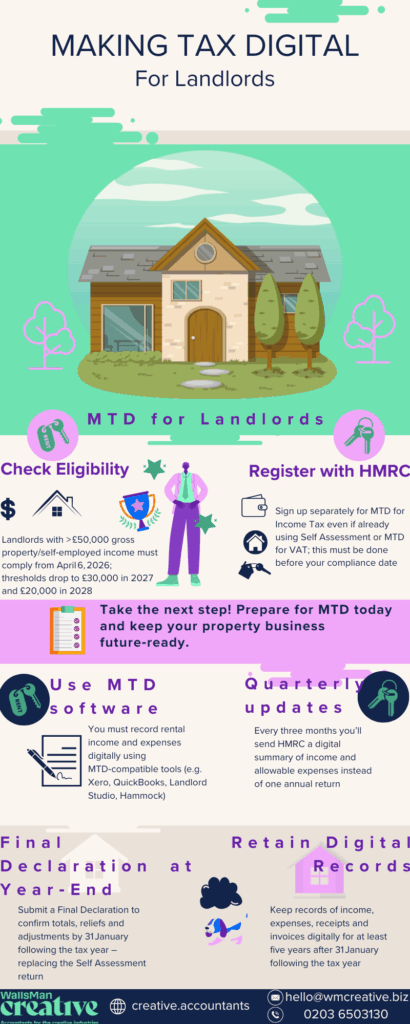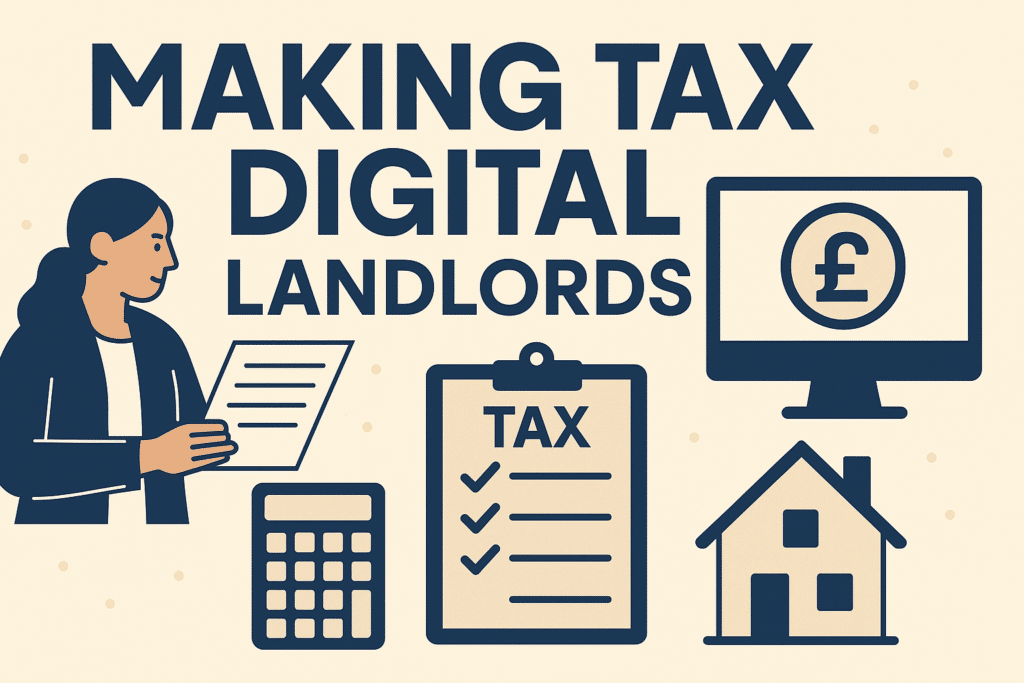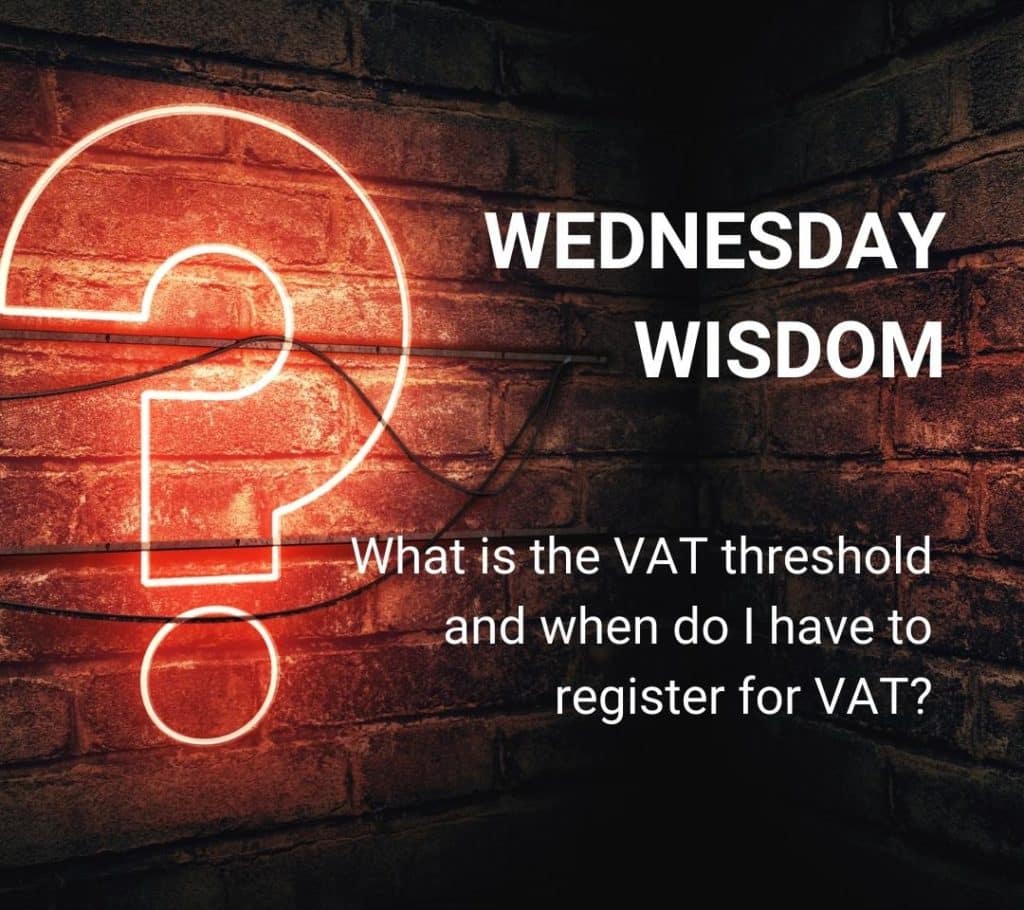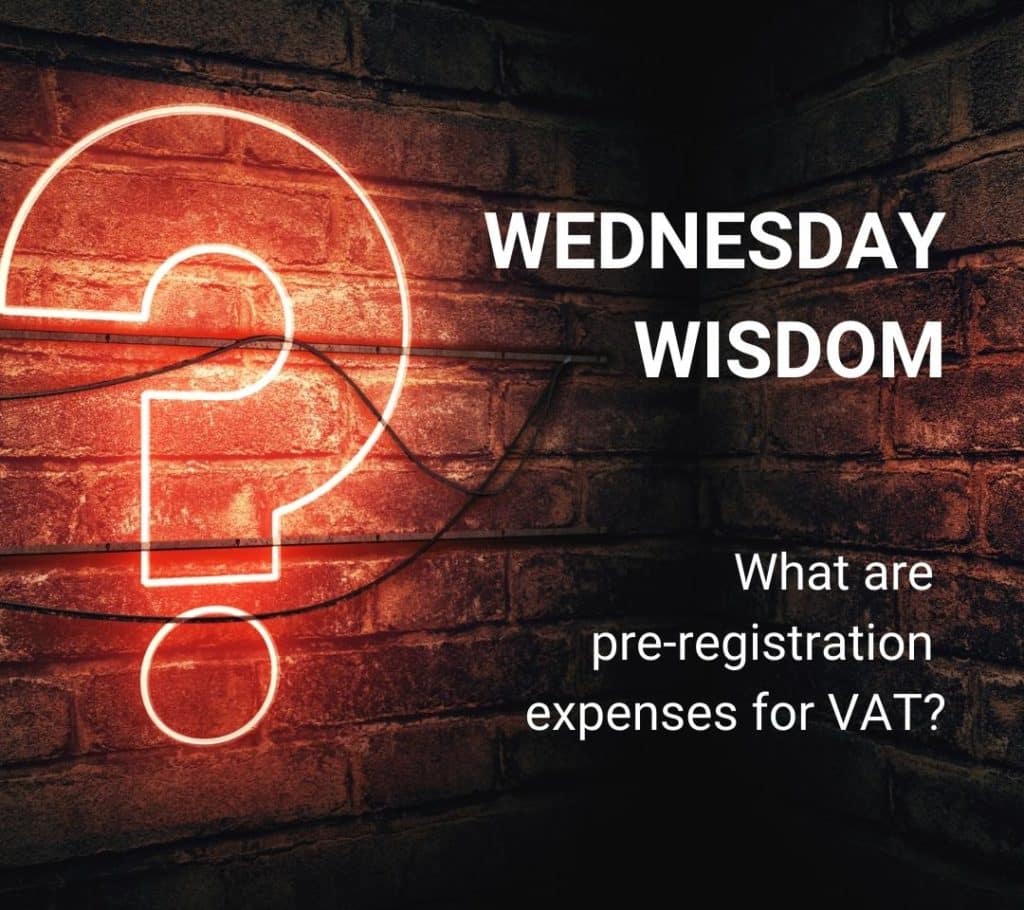If you’re a landlord earning income from rental property, Making Tax Digital (MTD) is about to change how you deal with HMRC. Making Tax Digital for landlords is a government initiative aimed at modernising the UK tax system – shifting it from annual returns to a more digital, real-time setup.
Instead of submitting one big Self Assessment each year, you’ll need to keep digital records and send updates every quarter. That means using MTD-approved software, staying on top of your finances throughout the year, and ditching spreadsheets for good.
This isn’t optional!
If your property income is above £50,000, MTD will apply to you from April 2026. The goal is better accuracy and fewer surprises at tax time – but it also means more frequent reporting and tighter deadlines.
It’s an ongoing routine moving from once-a-year admin panic to a smoother one. And the earlier you get familiar with the system, the easier that shift will be.
Creative Takeaways
- Landlords with rental income over £50k must follow MTD from April 2026 (£30k+ from April 2027).
- Quarterly updates replace annual tax returns, using HMRC-approved software.
- Digital records are mandatory – no more spreadsheets or paper.
- Choosing the right software (Xero, FreeAgent, Hammock, etc.) makes compliance easier.
- Accountants can handle registration and submissions on your behalf.
Table of contents
- 1. Who needs to follow Making Tax Digital for landlords rules
- 2. When you need to sign up for MTD as a landlord
- 3. Making Tax Digital software for landlords: what landlords need
- 4. Use Making Tax Digital software for landlords (and how to choose one)
- 5. Prepare MTD for landlords with your accountant
- 6. Calculate Making Tax Digital for income tax if you’re a landlord
- 7. FAQ: prepare for MTD with questions answered
- 8. Get MTD-Ready without the stress with WallsMan Creative
1. Who needs to follow Making Tax Digital for landlords rules
If you’re a landlord with property income over £50,000, you’re on the list.
Starting April 2026, HMRC will expect you to keep digital records and submit quarterly tax updates under the MTD for Income Tax Self Assessment (ITSA) scheme.
This applies whether you’re renting out one flat or managing a portfolio – as long as your rental income (before expenses) crosses the £50k threshold. It doesn’t matter if you have a full-time job or if letting is your side gig – the rule is based purely on income level.
What if you earn less than that?
You won’t be brought into MTD just yet, but that may change in future phases. There are also limited MTD exemptions, if you can’t use digital tools due to:
- age
- disability or
- location.
But these are tightly defined and you’ll need to apply.
Bottom line: if your rental income is above £50k, it’s time to prepare!
2. When you need to sign up for MTD as a landlord
Here’s how it rolls out:
- April 2026 – This is the big one. From this date, landlords earning over £50,000 from rental income will need to follow MTD for Income Tax.
- Every quarter after that – You’ll need to submit an update to HMRC every three months through approved software. These aren’t full tax returns – just summaries of your income and expenses.
- Final declaration – At the end of the tax year, you’ll still send a final submission to confirm everything’s accurate and complete.
It might sound like a lot, but it’s really about shifting to little-and-often instead of one big scramble each January.

There’s another upcoming rollout for landlords between £30,000 to £50,000 from April 2027.
There’s no official rollout yet for landlords under that mark, but the government has hinted that lower thresholds could follow later – so even if you’re under the radar now, it’s worth keeping tabs. Make sure you check out our guide on Making Tax Digital timeline, so you’re always up-to-date about it!
You also have to keep in mind that MTD for Income Tax and MTD for VAT are separate schemes. MTD for VAT doesn’t cover income tax, so you’ll need to register for MTD for Income Tax separately. You can also learn more about MTD for VAT on our website.
3. Making Tax Digital software for landlords: what landlords need
To comply with MTD, you’ll need to use HMRC-approved software – and that means moving away from paper records or spreadsheets.
The software must be able to:
- Keep digital records of your rental income and expenses
- Connect directly to HMRC’s systems
- Submit quarterly updates and a final end-of-year declaration
Most modern tools also automate tasks like bank feeds, receipt scanning, and real-time income tracking – which means less manual input for you. If you’re already using accounting software, check if it’s MTD-ready. If not, you’ll need to switch or bolt on an approved add-on.
It’s not just about ticking a compliance box – good software can actually save you time, reduce errors, and help you see how your property income’s performing month to month.
4. Use Making Tax Digital software for landlords (and how to choose one)
There’s no one-size-fits-all here. The best software depends on how involved you want to be, how many properties you manage, and whether you’re working with an accountant.
Here are a few solid options:
- Xero – Clean, easy to use, and integrates well with banks and apps. Good if you want visibility and don’t mind a bit of setup.
- FreeAgent – Ideal for landlords who also freelance or run a small business. MTD-compliant and very user-friendly.
- Hammock – Built specifically for landlords. Tracks rent, mortgages, repairs – and does the MTD part in the background.
- Landlord Studio – Tailored to UK landlords. Offers rental tracking, document storage, and MTD compliance in one.
When choosing, look for:
- HMRC approval (non-negotiable)
- Automation features (like auto categorising expenses)
- Support quality
- Cost – most charge monthly or annually
If you use an accountant, ask them which tools they support – we stand with Xero, and we can handle this change for you with that software, too.
5. Prepare MTD for landlords with your accountant
Can an accountant sign you up for Making Tax Digital?
The answer is definitely: yes!
A qualified accountant can register you for MTD on your behalf using their agent services account. This can save you time and prevent admin errors – especially if you’re juggling multiple income sources.
Most landlords working with an accountant won’t need to handle registration themselves – it all happens behind the scenes. It’s quick and efficient!
6. Calculate Making Tax Digital for income tax if you’re a landlord
Don’t worry, calculating your income tax under MTD works the same way as regular Self Assessment – but this time with quarterly updates instead of one big return.
Your software should estimate tax based on income and allowable expenses logged throughout the year. There are more complicated issues related to MTD for landlords, because, for example, if you sell a property, it doesn’t count towards MTD for Income TAX: it falls under Capital Gains Tax instead.
So, you’ll need to report and pay this tax within 60 days of the sale.
If you want a clearer picture, an accountant from WallsMan Creative can help you project annual liability based on real-time data, so you’re never caught short come January.
7. FAQ: prepare for MTD with questions answered
It means you’ll need to keep digital records of your rental income and expenses, and submit quarterly updates to HMRC using approved software.
Yes, for landlords with income over £50,000 from April 2026, and over £30,000 from April 2027.
Not exactly. The aim is to reduce errors and improve tax accuracy – but it will make under-reporting harder.
That depends. Some prefer owning property through a limited company; others benefit more from keeping it personal. It’s best to speak to an accountant.
They cross-check data from letting agents, banks, and even online platforms. Algorithms help flag inconsistencies.
They might. HMRC gets data from payment platforms and third parties – if your income isn’t declared, it can raise red flags.
Yes – HMRC uses a points-based penalty system. If you miss a quarterly submission deadline, you get one penalty point. Once you reach four points, you’ll be fined £200. After that, every additional missed deadline triggers another £200 fine. Penalty points expire after two years if you stay compliant.
8. Get MTD-Ready without the stress with WallsMan Creative
Making Tax Digital doesn’t have to mean more admin – but it does mean new habits, new tools, and no more last-minute spreadsheets.
The sooner you get set up, the smoother the transition. Most landlords who start early find it easier to stay on top of things – and avoid fines down the line.
If you’re juggling rental income alongside creative work or a freelance business, WallsMan Creative can help you get everything sorted. We work with landlords like you to stay compliant, simplify the numbers, and take the pressure off tax season.




